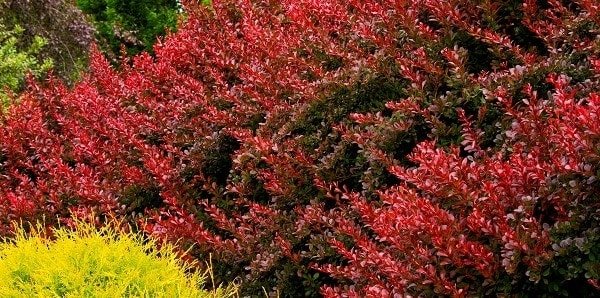Sour thorn

Berberis, also known as sour thorn, belongs to a genus of shrubs, less often trees, plants from the Berberisaceae family.
It is a broad-leaved, semi-evergreen /its leaves partially fall off/, in some areas it is also an evergreen shrub, sometimes reaching the size of a small tree with an upright stem, the branches of which form an acute angle with it.
Its bark is brown-gray or gray-brown. It also has another name “caramel tree”.
It is grown on almost all continents except Australia and Antarctica, although it is mainly distributed in the mountainous regions of the Northern Hemisphere.
The sour thistle is grown in ordinary gardens, and uncultivated it is found in Central and Southern Europe, North America, Siberia and Persia.
Nutritional value of 100 grams of sorrel
• Proteins – 1 gram;
• Fats – 0 grams;
• Carbohydrates – 9.5 grams;
• Mineral salts – 0.7 grams;
• Water – 85 grams;
• Energy value – 29.5 kilocalories;
The fruits of the sour thistle are considered a low-calorie and dietary food, since 100 grams of them contain 29 kilocalories. And the energy value of barberry jelly is 218 kilocalories per 100 grams, so its excessive consumption can adversely affect weight.
But the caloric content of sorrel compote is 112 kilocalories per 100 grams.
Beneficial properties
The fruits of the sorrel contain carotenoids /xanthophyll, lutein, chrysanthemaxatin, zeaxatin, auroxatin, flavoxatin, capsanthin, etc./, carbohydrates, tannins, pectin, organic acids, macro- and microelements, vitamin E, C and beta carotene.
The composition of the roots of the leaves and roots of the barberry includes 11 alkaloids / the main ones are berberine, oxyacanthin, palmatine, columbatin, iatroricin/.
The leaves of the sorrel also contain vitamin E, C, K, malic and citric acid, carotenoids, alkaloids, resinous and tannic substances.
Besides looking good, barberry also has healing properties. It was used even in ancient Greece as a means of purifying the blood.
In Tibetan monasteries, sour thorn was considered a plant that prolongs life. During the Middle Ages in Bulgaria, barberry was used to stop bleeding, inflammatory processes and treat colds.
And the juice obtained from the fruits of the sour thistle has antipyretic, antimicrobial and hemostatic properties. It has also been used to cleanse the body of toxins and slow down the aging process.
For liver diseases, rheumatism, inflammation of the bladder and kidneys, fresh ripe fruits of the sorrel should be consumed. Berberis contains the alkaloid berberine, which has strong choleretic properties.
Also, this substance can help a person get rid of his addiction to alcohol and smoking.
In conventional medicine, alcohol tincture of barberry is used. It is prescribed for hepatitis, uterine bleeding and cholelithiasis.
There is also a medicine called berberine, whose name comes from the substance of the same name, which is extracted from the sorrel.
Italian scientists in collaboration with doctors found that berberine is practically indispensable in cases of enlarged kidneys due to the disease malaria.
Indian physicians consider this alkaloid useful in the treatment of leishmaniasis.
In the treatment of malignant tumors, they recommend a special herbal tea containing the root of thistle.
The bark of the barberry roots is included in the composition of cholelithin – a medicine that is indicated for the treatment of gallstones, exacerbation of jaundice and cholecystitis. In Bulgaria, the bark of the sorrel is used for kidney diseases and sciatica.



